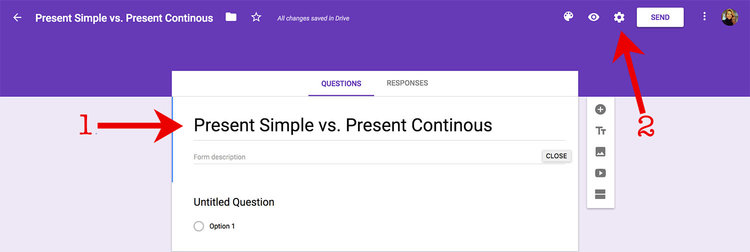The following entry considers three components which provide a cohesive strategy for using and modifying formative assessments in the classroom.
Asking the Right Questions
Generally speaking, directly asking students whether they understand a concept does not yield accurate results. One reason may be that a student may simply not know how to evaluate their knowledge. As an alternative, it is much more effective to apply the concept presented that day and ask for evidence of learning.
One way to do this might be to use the Google Forms application as an exit ticket at the end of class and have students input one thing they have learned, one thing they feel a little uneasy about still, and one question they have. This data is then automatically collated in a spreadsheet which the students and teachers can view to compare and contrast their knowledge gains.
Example:
Takeaway: Modify assessment if questions do not evaluate knowledge.
Analyzing Data and Work Properly
Collecting data in a spreadsheet is an accurate and convenient way for students and teachers to assess knowledge, but alone is not enough. More important, I believe, is having a method to understand what the data mean so that review can take place which is not a waste of time. One example would be to use a rubric which clearly states quality standards and serves to measure improvement in an objective way.
Consider the case where students have to write a topic sentence for a paragraph as their exit ticket in their 10th grade ESL class. One way to measure this would be to send them to the students with comments on how to improve, but there is no assurance that the students will understand the teacher’s feedback. A better way, however, would be to have the students self-evaluate at the top of the next class with a rubric that clearly states what makes a proper topic sentence when writing paragraphs.
Demonstration in a math class:
https://www.youtube.com/watch?v=csN2NJtO18Y
Takeaway: Modify assessment if students cannot measure where they are at.
Appropriate Follow-up
If the students have received unambiguous tasks for demonstrating knowledge and that knowledge is able to be accurately evaluated in an objective manner, the third component of an effective strategy for assessments is to know what to do with the results. Let us turn to the results of the aforementioned Google Forms exit ticket to illuminate this point.
Consider, for example, that a student wrote that they understood the purpose of topic sentences very well, they still feel uneasy about transitions between paragraphs, and they had a question about the best way to write a conclusion. Additionally, consider the situation where the majority of the class expressed some confusion about transitions between paragraphs. As a result, the teacher would know exactly what the students want to learn about and can now dedicate review to the various uses of transition terms.
In short, this method would demonstrate that classroom review is data-driven and not randomly chosen by the teacher. Additionally, planning for classroom review also prevents a teacher from singling out a student who needs help by overloading them with excessive homework.
Takeaway: Modify assessment if it does not provide a clear picture of what needs to be reviewed more.
